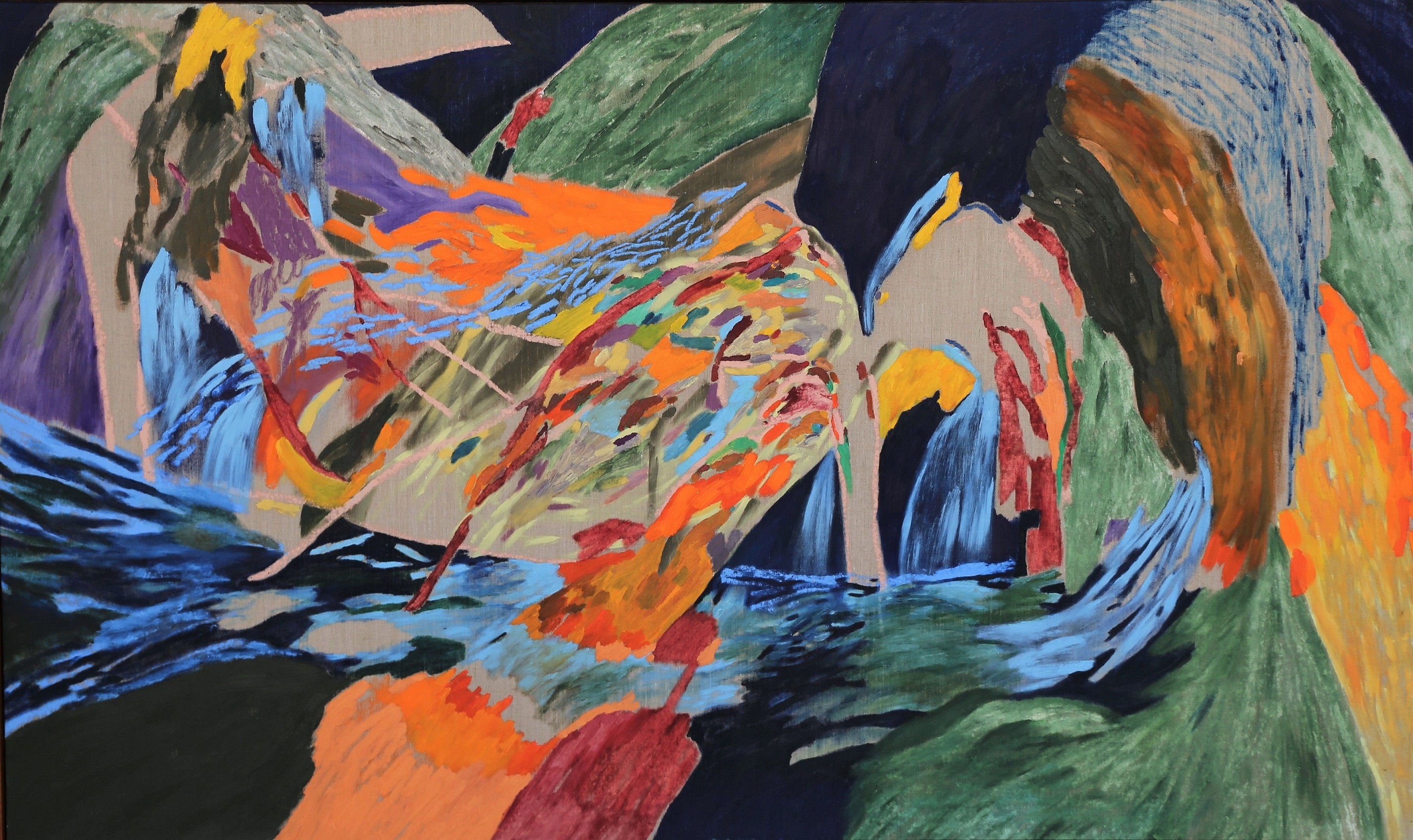PRESS RELEASE

LUCY JANE TURPIN: Vago
Jun 9 – Jun 30, 2021
Everard Read Cape Town is pleased to present Lucy Jane Turpin's latest solo exhibition, Vago at the gallery.
Lucy Jane Turpin was born in Johannesburg in 1983. She completed her Honours Degree in Fine Arts at the University of the Witwatersrand, Johannesburg and her Master’s Degree cum laude at the University of Stellenbosch in March 2015. She has since taken part in residencies in Iceland, Morocco and most recently Italy.
Starting out from the original meaning of “wandering,” the word vago still carries the idea of movement and mutability, which in Italian is associated with both uncertainty and indefiniteness and with gracefulness and pleasure ... Contributing to this pleasure is the variety, the uncertainty, the not seeing everything, and therefore being able to walk abroad using the imagination in regard to what one does not see...
- Italo Calvino, Six Memos for the Next Millennium
In their search for definitiveness, the painter must navigate the shifting landscape by touch. Passing through the same buildings in different cities, they attempt to measure the circumference of straight lines. Where walls meet in corners, the painter stands, their body scaffolding against another insecure structure. Reaching their arms up to mark something unfound, they leave tiny scratches on the palettes of the ceilings. Always returning to make new ones and connect the old ones into maps.
In the lobby’s and stairwells of these buildings, painters often bump into one another. In the awareness that they are both looking for the same thing, there is no need to ask where the other is going. And so, Silence often stands between them, a mutual friend who needs no introduction. Silence nods agreeably while the painters try all the different ways of pinning broken sentences to the untaking air. Each minute of conversation is a swallow of the other's attempt to explain their route to definitiveness – directions that only wordlessness could impart.
In fear of walking in circles, the painter often tries to cut their own shadow out from the ground. Scooping it up and caging it between the dark hollows of their palms, it is a moth being carried toward a window. Together, shadow and body attempt to navigate the density of experiences without parting hands. But the painter’s shadow never fully ceases to flap, a relentless knocking until the seals of their fingers part. The present floods in, unable to sever itself from the permeability of skin, the fragility of memory never tricked into being saved.
When the painter needs a break from their search, they take trips to the sturdier mainland. But they always return to continue alone. Before continuing, they stop by their studio. After this time spent away, they receive the room like the novelty of a posted letter, expectant of revelations from a prior self. The painter traces the straight arms of the envelope’s seam, only to discover the foreignness of their own hands inside. When they tip the envelope upside down, not even whispers fall out. Licking the sweet sap of the fold closed, the painter turns to confront the raw back of their canvas, emptiness flooding the bloodstream of the room.
Painting only becomes possible if the fingers are allowed to grow their own faces and teeth. The paintbrush is the tongue that extends – a muscle propelled by all experiences had and not had. To press the tongue of the paintbrush onto a surface is to release their stories from the painter’s body. Here, all the particles the shadow has ever absorbed enter into their own dialogue. The cold stone of a church, burnt eyes in a mirror, hands trailing words, another forgotten feeling. Each stroke is a voice, disappearing and reappearing in the instinct of colour, the painter translucent.
In order to find definitiveness, the painter has to wait and listen for silence to fall upon every building, in every city they’ve ever been. To listen is to spit out the self and offer one’s emptiness as a gift. Only then, standing securely on groundlessness, can a painting narrate its own narrative, in its own colour. The listener’s task is to resist the temptation to mix it into their own. The painter’s task is to stop looking and simply disappear.
- Robyn Perros
Installation images by Michael Hall
*Face masks are required and must be worn at all times when visiting the gallery



